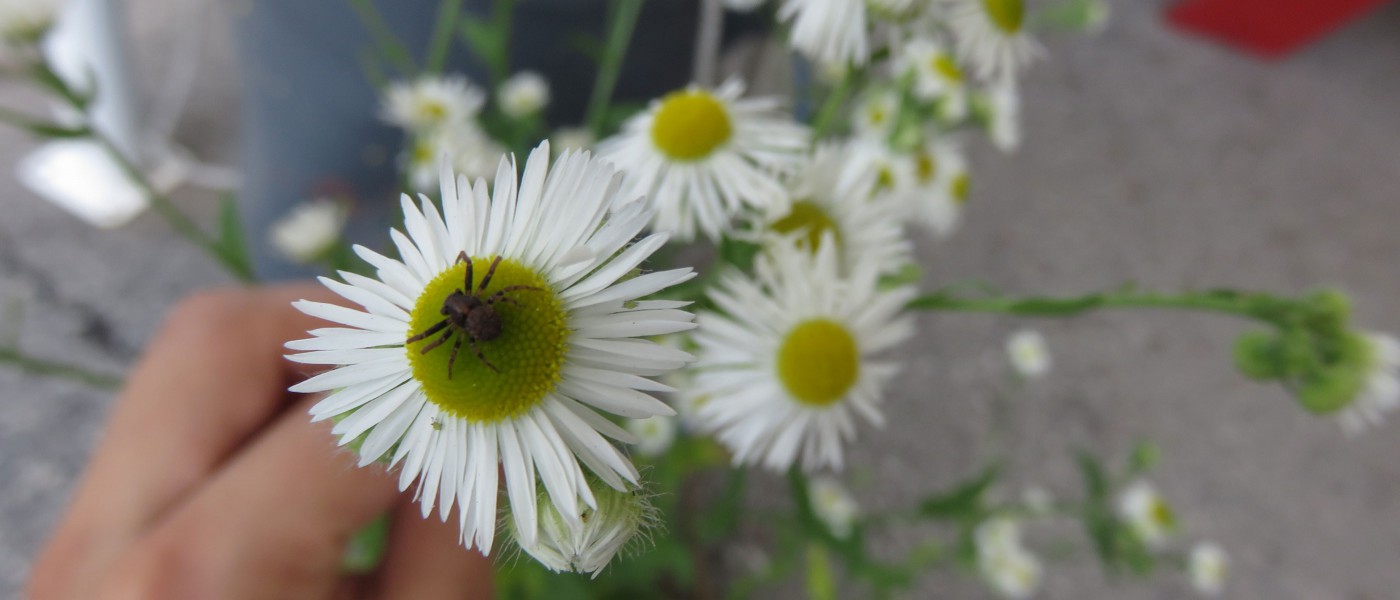This month’s weed is a lovely common North American native: fleabane! You may have seen this pretty, daisy-like wildflower in fields, against buildings and fences, and along roadsides in spring and early summer. Several very similar-looking fleabane species are common in the New York City area—Erigeron philadelphicus, E. annuus, and E. strigosus. In somewhat of a role reversal, these same three fleabanes are becoming weeds in Europe. (It’s usually the other way around; many European plants have become weeds here.)
Fleabane flower heads range from white to pinkish to pale purple. Reproducing only from seed, fleabane is easy to control through mowing or pulling—no tenacious taproot to dig out, persistent rhizomes to unearth, or exuberant seed production to worry about. These easygoing reproductive tendencies, along with its attractiveness, make it an ideal weed!
Fleabane is a member of the huge aster family (23,000 species), which includes many beloved garden plants—sunflowers, cosmos, mums, zinnias, dahlias, and marigolds, among others. Look closely at a fleabane flower, and you will see that it is actually a cluster of tiny flowers grouped together, creating the illusion of one large flower. This is a characteristic of aster family flowers. Their flower heads have an outer ring of “ray” flowers, each with one big showy petal. In the center are the “disc” flowers, which each have a tiny tube petal. These clusters of flowers serve to attract pollinators and produce seeds efficiently.
Fleabane’s hairy stems are the source of the genus name, Erigeron, which roughly translates to “old man in the spring.” Its common name, like those of other “-banes”—wolfsbane, dogbane, leopard’s bane, henbane—alludes to the folklore that they have the ability to kill or ward off pests. Historically, fleabane was burned or dried in sachets to repel fleas, gnats, flies, and all other manner of tiny, annoying creatures, though there is little evidence of its effectiveness as an insect repellent.
Like many of its showier aster cousins, fleabane provides nectar for hungry, over-worked pollinators. It's also a frequent hangout for crab spiders preying on insects and a nursery for the lynx flower moth. I’ve also read that the seeds are a favorite snack of American goldfinches, ground finches, and sparrows. Considering its storied past and unobtrusive present, you might look upon this dainty interloper a little more favorably than you would more aggressive weedy plants.




